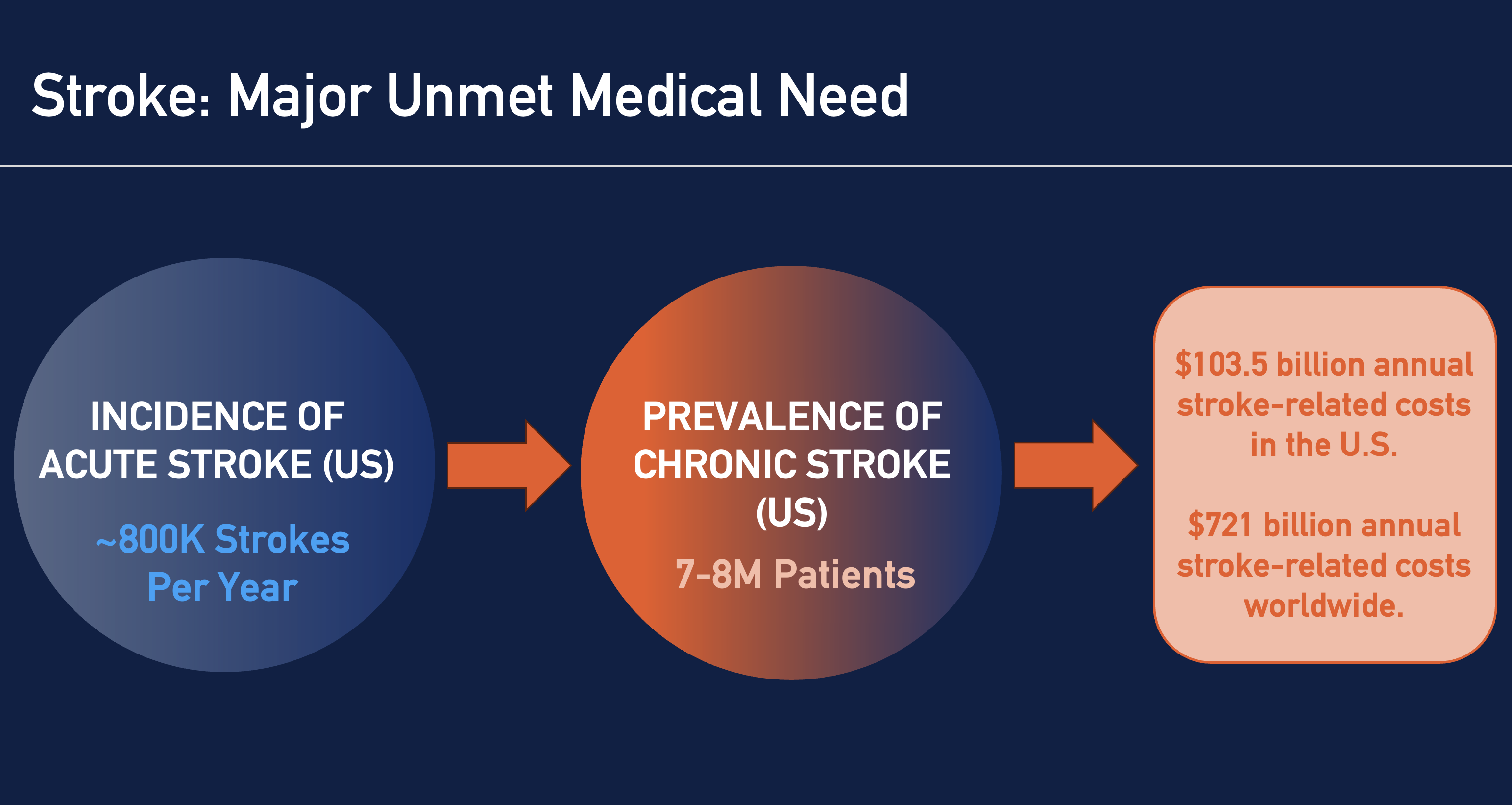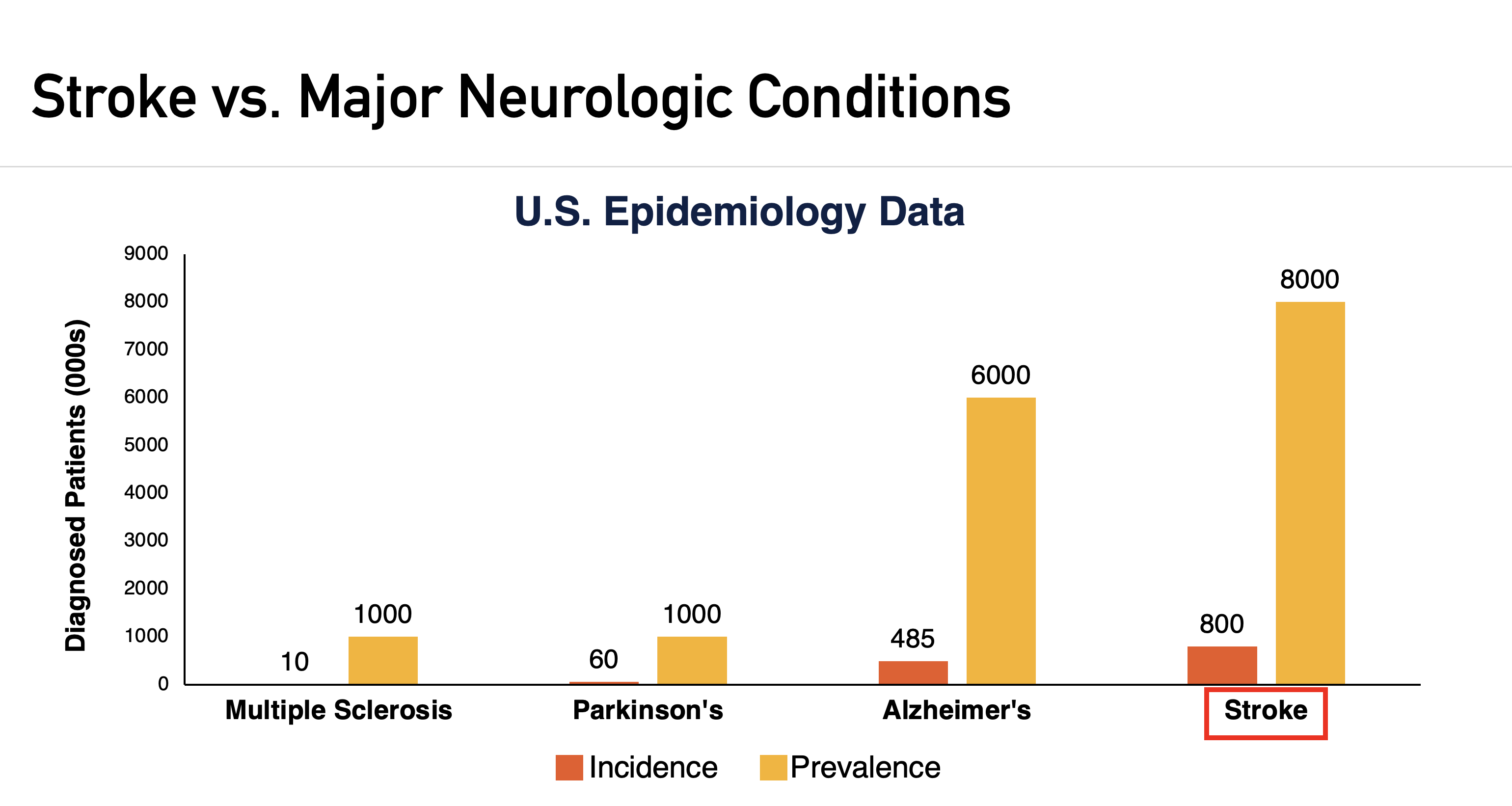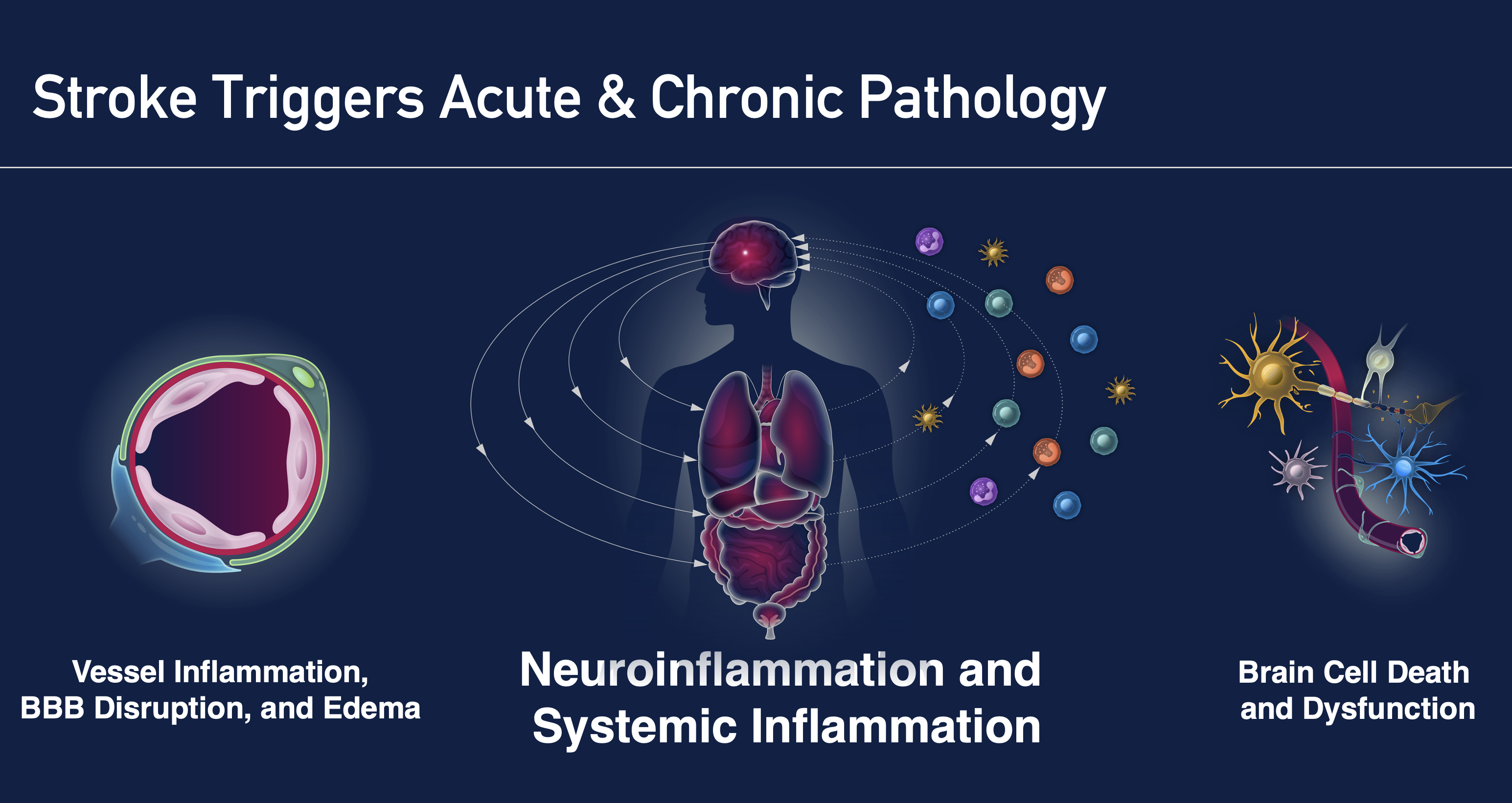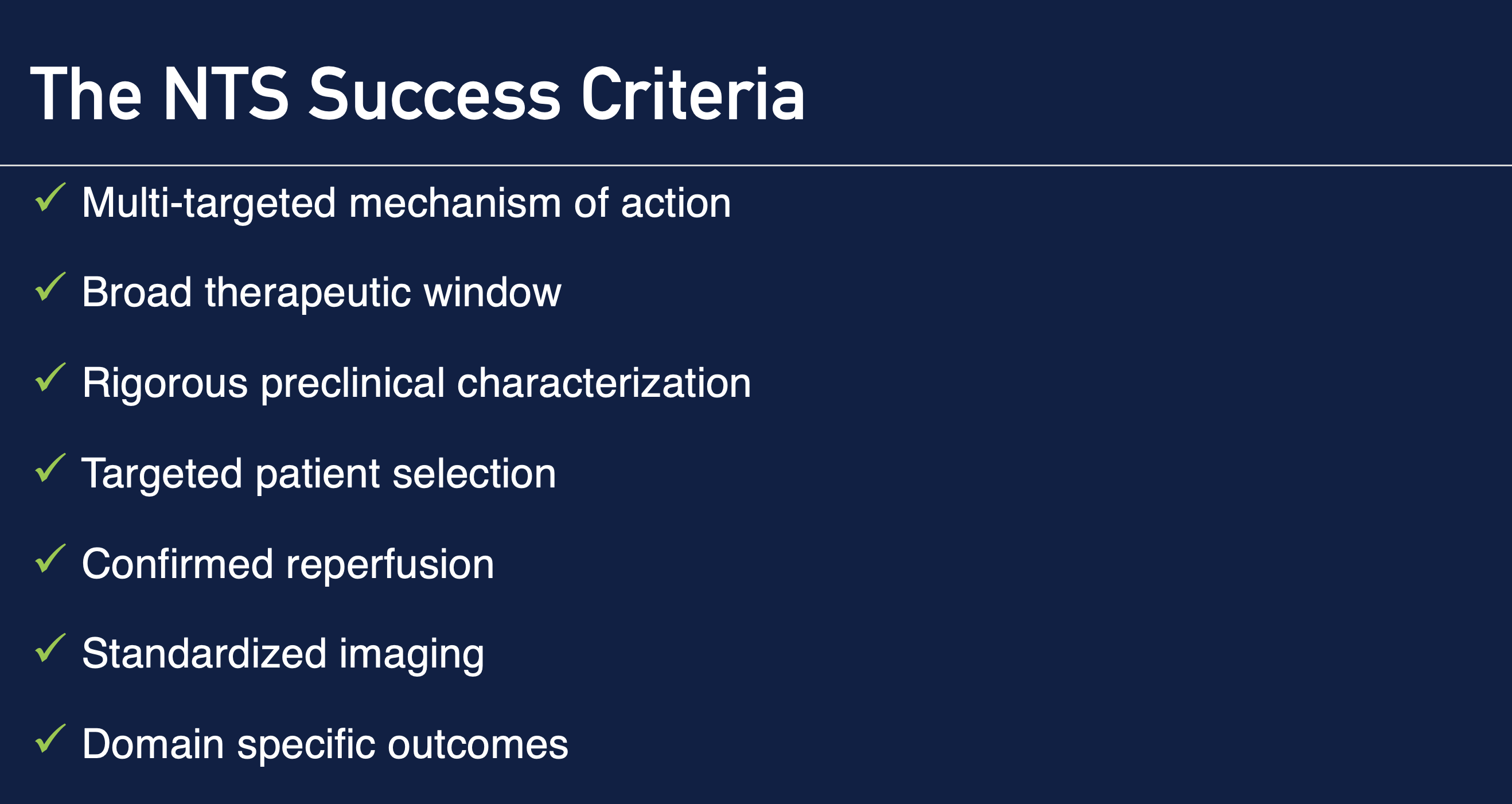Stroke

In the US, approximately 800,000 acute strokes occur annually. The thrombolytic agent, tissue plasminogen activator (tPA) is the only FDA-approved drug for treating acute stroke.
Chronic stroke can be a lifelong condition, causing significant disability, comorbidity and mortality. The prevalence of chronic stroke in the US is approximately 7-8M patients. These patients display a wide range of motor, sensorimotor, cognitive, neurobehavioral and systemic deficits. There are no FDA approved chronic stroke therapeutics.
The annual direct health care cost burden of stroke is estimated at $103.5B in the US and $721B worldwide.
The neuro- and systemic inflammation caused by stroke triggers acute cell death followed by a secondary immune response. Immune cells (microglia, T-cells, B-cells and macrophages) perpetuate chronic inflammatory conditions, leading to persistent brain cell damage, vessel inflammation, blood-brain-barrier disruption, and edema. These inflammatory events are the core pathologies responsible for patient deficits.
References
Alzheimer’s Association
American Heart Association
American Stroke Association
Center for Disease Control
National Institute of Neurological Disorders and Stroke
National Multiple Sclerosis Society
Parkinson’s Foundation
References
Andres et al. JAMA Neurology. 2023 Jun; 80(6): 646-648.
Boehme et al. Neurocrit Care. 2016 Aug; 25(1): 133-140.
Cramer et al. Stroke. 2023 Mar; 54(3): e86-e90.
Feigin et al. Int J Stroke. 2022 Jan; 17(1): 18-29.
Gladstone et al. Stroke. 2022 Aug; 33(8): 2123-2136.
Grupke et al. Clin Neuro. 2015 Feb; 129: 1-9.
Kidwell et al. Stroke. 2001 Jun; 32(6): 1349-1359.
Lim and Smith. Anaesthesia 2007 May; 62(5): 474-480.
Lu et al. Life Sci. 2009 Sep; 85(11-12): 450-456.
Robba et al. Curr Opin Crit Care. 2020 Apr; 25(2) 137-146.



